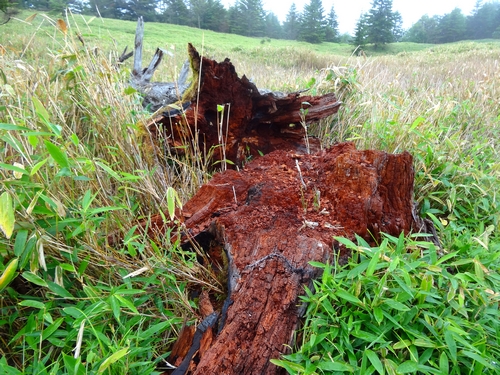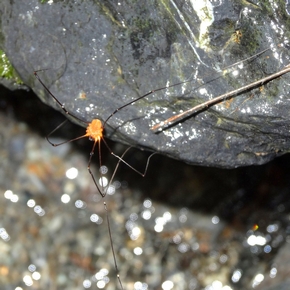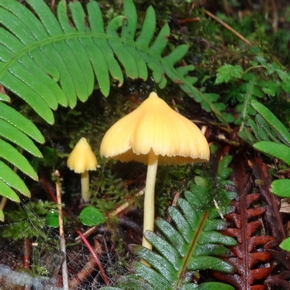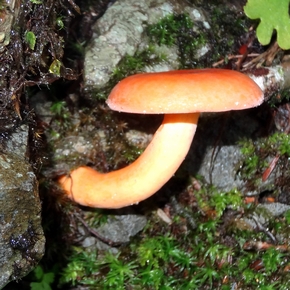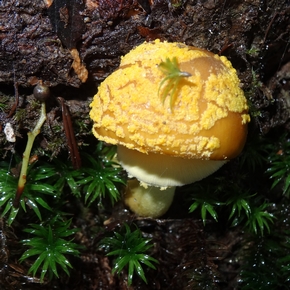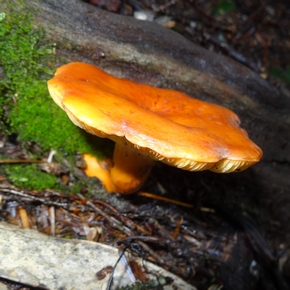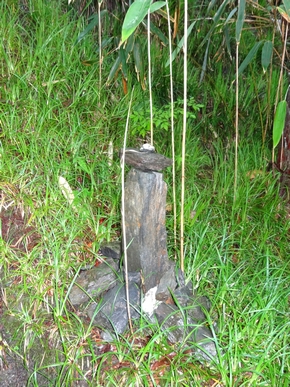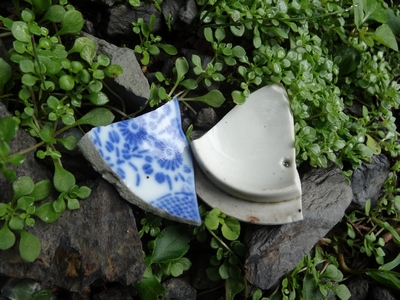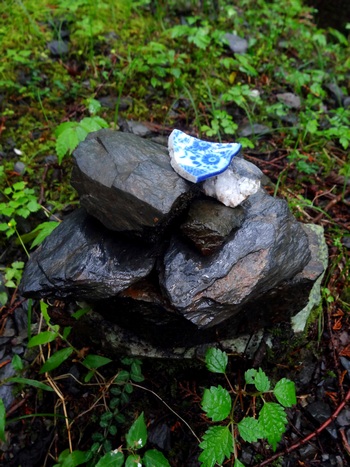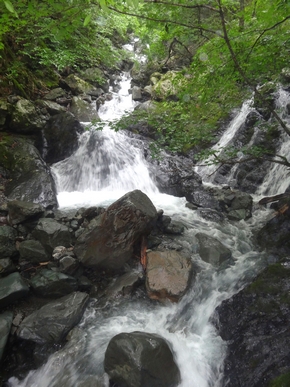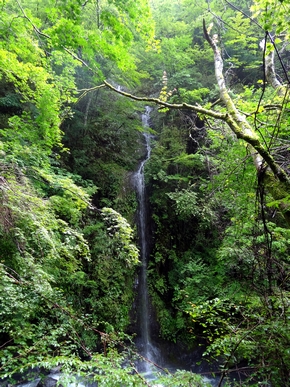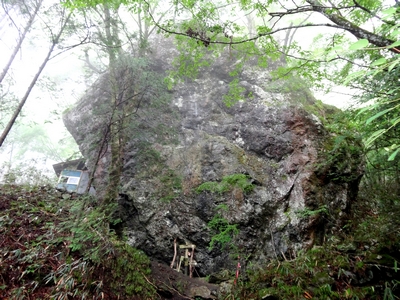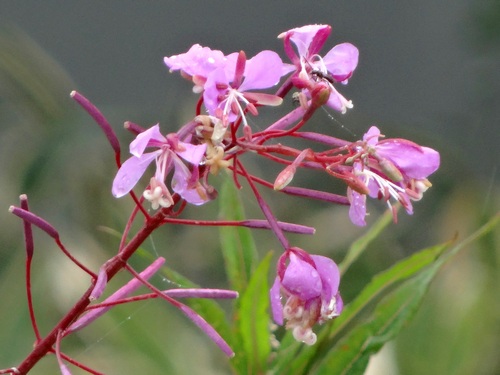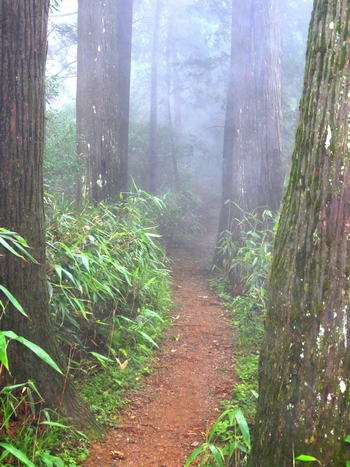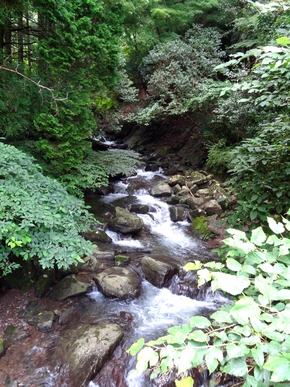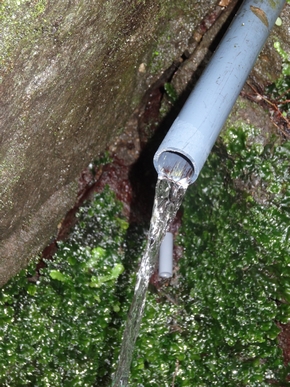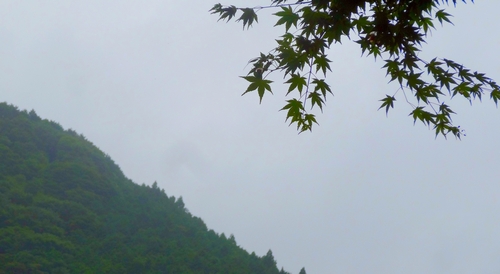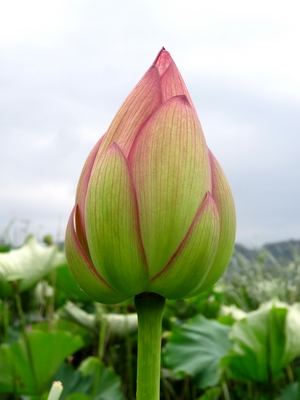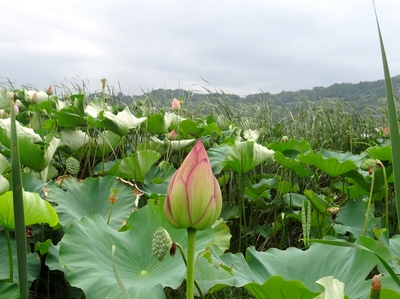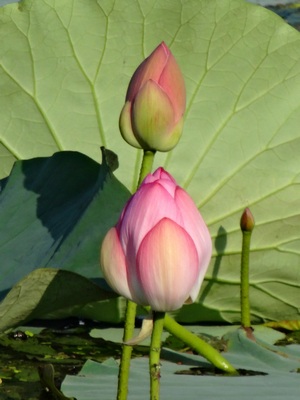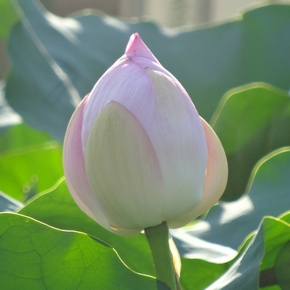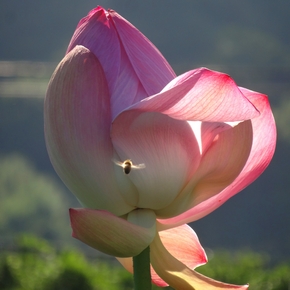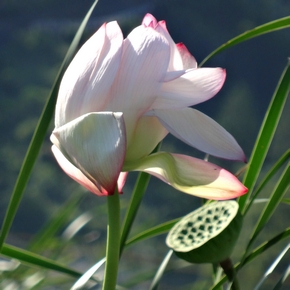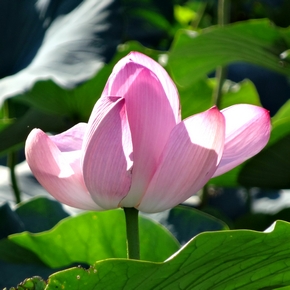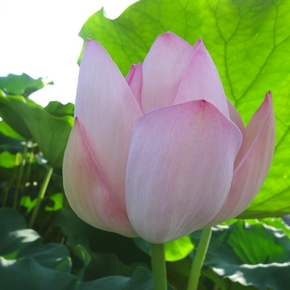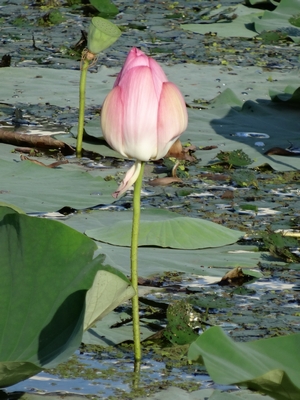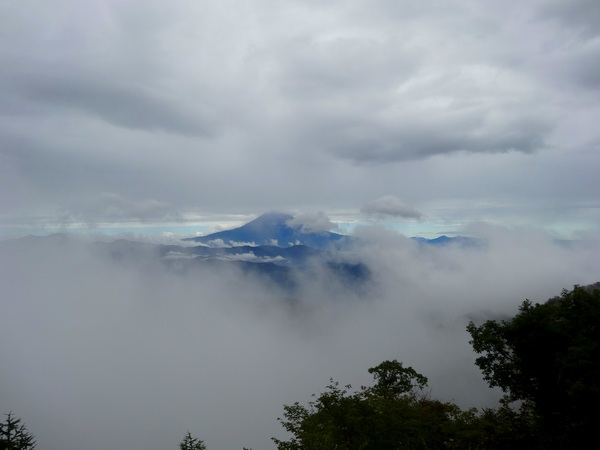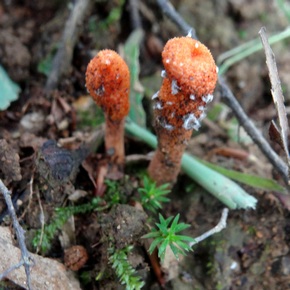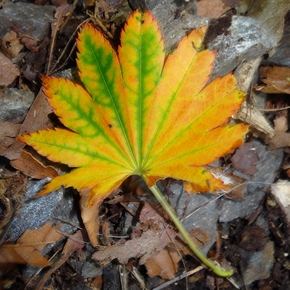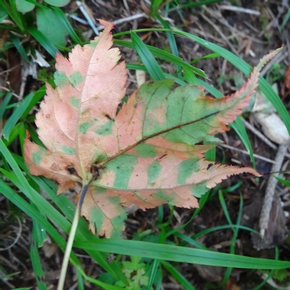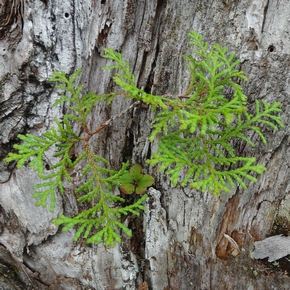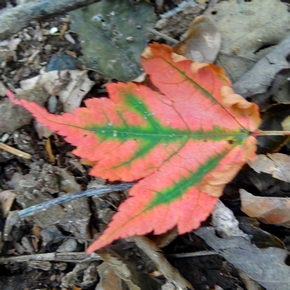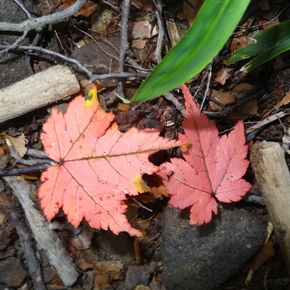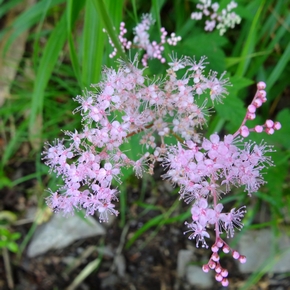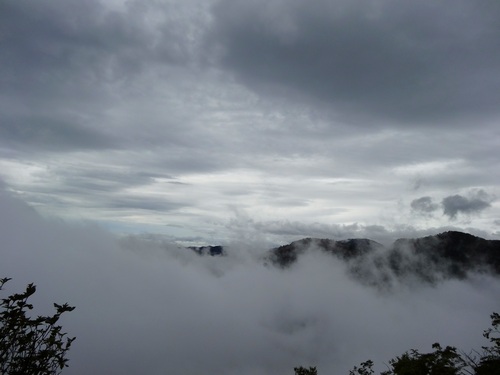Some folks stayed home, but all those who were out on the mountain had a great day. Some scrambled up the river, frenetic with energy. Others were content to plod along. No problem. Everyone has his or her own pace.
And some of those who lived on the mountain seemed pretty much satisfied to stay in the spot they called home. They seemed to understand what the mountain was all about right there were they were.
It seems that those who come for the day see something magical in all the loose rock . . . and that they can’t stop themselves from picking up a big rock or a little stone and stacking it on top of another big rock or stone. For sure, as you climb the path along the Nishi Hikage River, here and there you’ll see stacks of rocks and stones.
You can choose your own word for one of these stacks: church, temple, shrine, cute stack of rocks. I prefer temple, more or less because I like the sound of the word. Temple.
And you will add a rock to a rising temple. Because you’ll feel something very nice on the mountain—how could you not, what with the way that river keeps rushing, and the trees keep growing, and what with your eyes discovering things growing like you never knew things could grow, in all sorts of nooks and crannies, in shapes and sizes and colors that awaken you, that sometimes even make you feel like you’re scuba diving in the sky?—and you’ll want to express your gratitude to the mountain for giving you that feeling.
Of course you will.
You’ll understand that the others, the ones who built up the temple you’re adding to—ones you’ll never meet—felt something pretty much the same as you did and wanted to express the same gratitude, and that your expression of gratitude is going to add to theirs . . . and that the dear souls who come after, well, they’re going to want to express their gratitude all the more, because of what you added.
Last Saturday, before we got to the “temple zone,” I found a shard from a broken bowl. Yes, yes, life is perfect nowhere. There are broken bowls everywhere. But here you are closer to the temples that are being built. Here, it’s a bit easier to see that you can build a temple from a broken bowl.
Yesterday, our party climbed steadily but also stopped a lot to take pictures (and fiddle with the camera). Trailhead (8:30 am) –> Oo-iwa, “the big rock” (9:25 am) –> Yomogi Toge, the Yomogi Pass (10:15 am) –> Yanbushi summit (12:05 pm). You can find good trail-defining pictures with trail times for a November climb here.
The first half of the trail follows the river up—and takes you across the river numerous times. Keep that in mind if it’s rained a lot before you go.
You’ll see lots of big rocks along the way, but believe me, you’ll know when you get to the big rock. It’s big. And there’s a sign that says this is the big rock (大岩).
You continue along the river all the way to the pass. (Honesty compels me to tell you that a “small” landslide has made the last stretch to the pass a bit treacherous. There’s a rope you can hold on to, but it may be more than some want to try.)
But let’s assume you get to the pass. Then it’s just a lot of huffing and puffing up to the top of Yanbushi. If you want to rest, search out this “sitting tree.” (Sure, sure, which way would you grow?)
Just before you get to the top, the trail widens, and on both sides of you, there are fields of small bamboo. Yanagiran also grow in the open areas, but we were a couple of weeks too late, at least this year. We saw only a few blossoms. Willow herb or fireweed may be translations for yanagiran, literally “willow lily.”
On a clear day, you can see Fuji-san from the top of Yanbushi, but this day wasn’t clear.
But it was lovely just the same . . . and what did it matter, we’d help build a beautiful temple.
